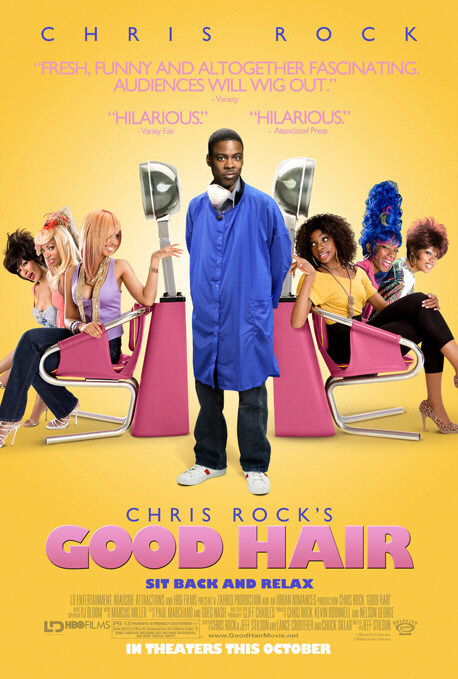Humor Delivers Activist Message in “Good Hair” Documentary
Black people should wear their nappy hair with pride. That’s the message I thought Chris Rock would drive home at the end of his humorous documentary essay on the hair styling habits of African American women. I was wrong.
Narrator Rock starts the award-winning film Good Hair (2009) by introducing us to his two little daughters, one of whom thinks she has “bad hair”. “I wonder what she got that idea,” asks Rock. But the bulk of the documentary is not spent investigating the roots of Anglo-centric models of beauty. Rather, the documentary wisely takes a slightly different tack. The bulk of the film is spent revealing the costs of styling African hair to flip like Farrah Fawcett’s long locks: the scalp-burning process of relaxing hair, the exorbitant expense of weaving extensions, and the big profits that other ethnic groups make selling African American woman Indian hair.
I was impressed the comedian Chris Rock could render such damning evidence in such an entertaining and light-hearted manner. His presence made the documentary even more enjoyable than Marlon Riggs Black Is…Black Ain’t (which I worked on in the early 1990’s when I had the good fortune of being a student in Riggs’ documentary program at UC Berkeley). Subsequently, when Good Hair finishes its theatrical run and airs on HBO, Rock may reach wider audiences with the film’s message than Riggs’ PBS documentary.
So what is the film’s concluding message? To paraphrase Rev. Al Sharpton (who reveals how he came to use hair relaxer himself), black people are free to wear their hair however they want. And after Rock’s investigation, we are all well informed about the high price that relaxers and weaves demand on health, purse, and possibly self-esteem.
One further note: I had been telling people that of the eleven documentary films that won awards at the 2009 Sundance Film Festival, ten of them were character-driven documentaries, with the exception of Good Hair, which was structured around ideas rather than a character on a quest. It turns out that I was wrong. Good Hair weaves it essay along the narrative arc of a Las Vegas-style hairstyling content featuring four contestants.
For more information on how to structure a documentary film around ideas and a character quest, check out the “Editing the Character-Driven Documentary” e-course on my website.
Go to http://www.newdocediting.com/land/editingdocumentaryecourse/
